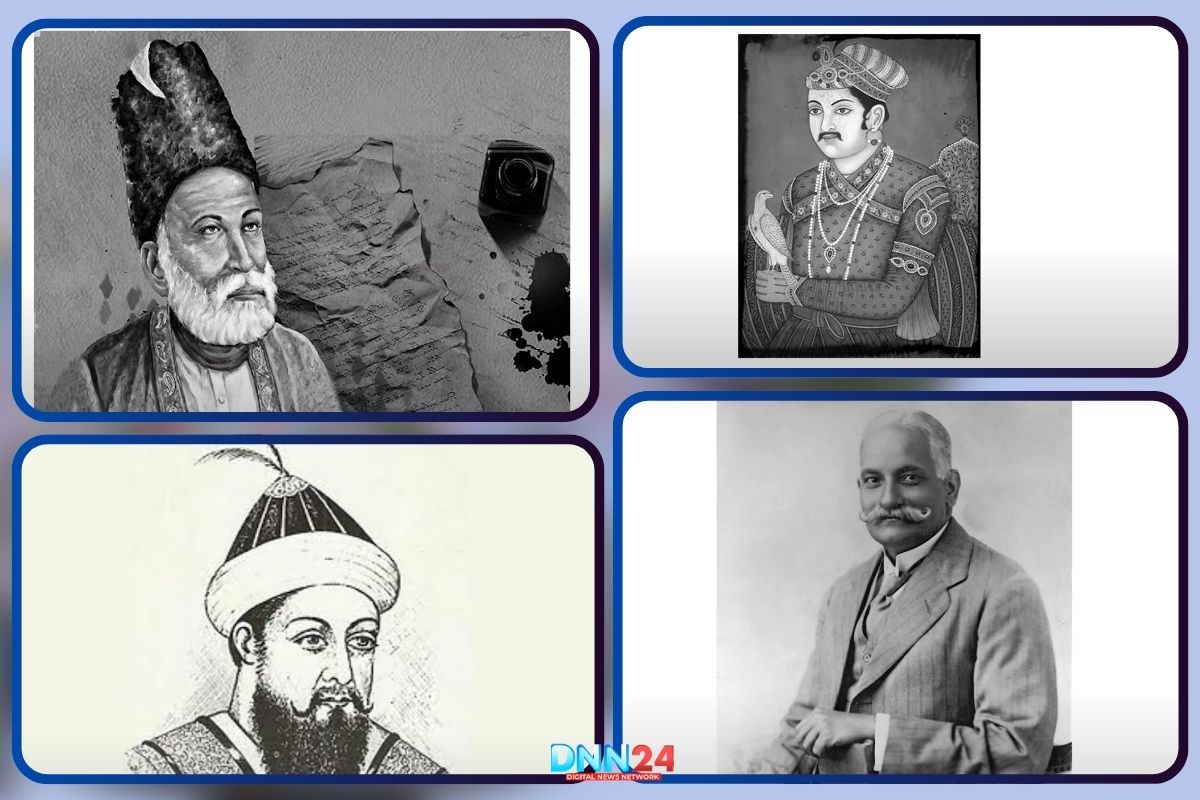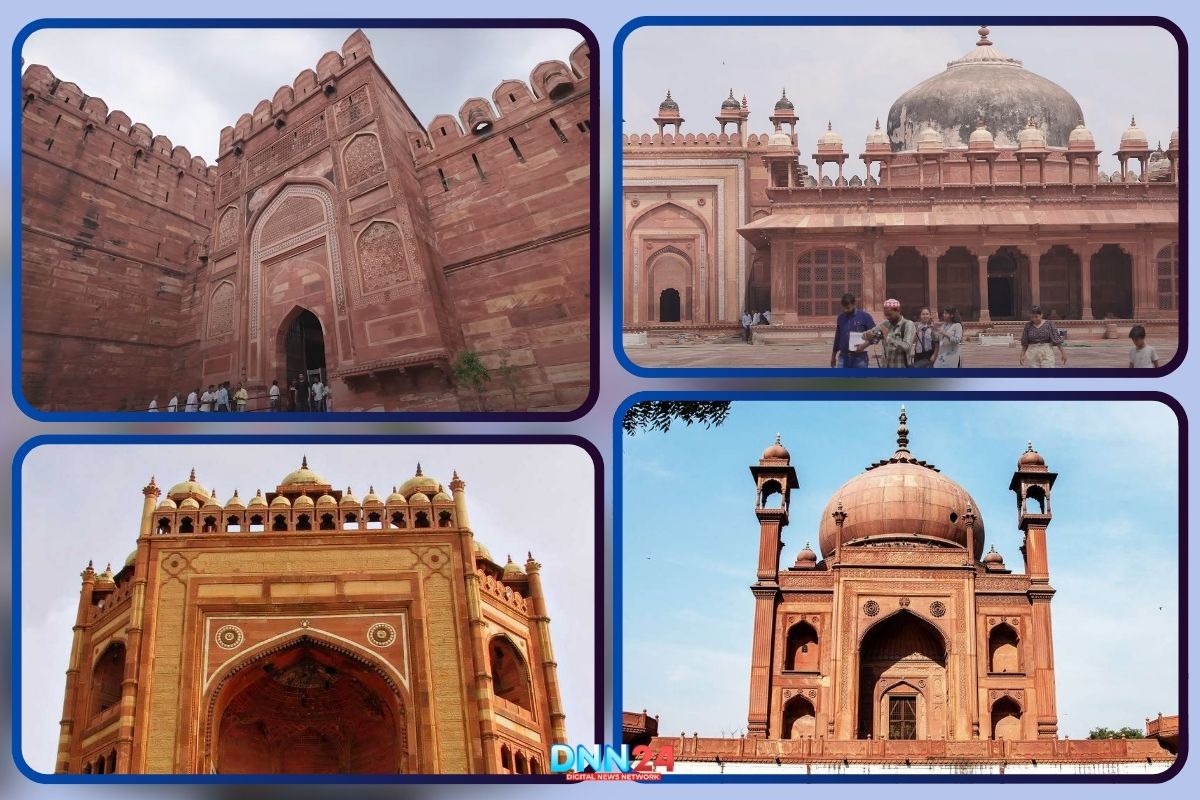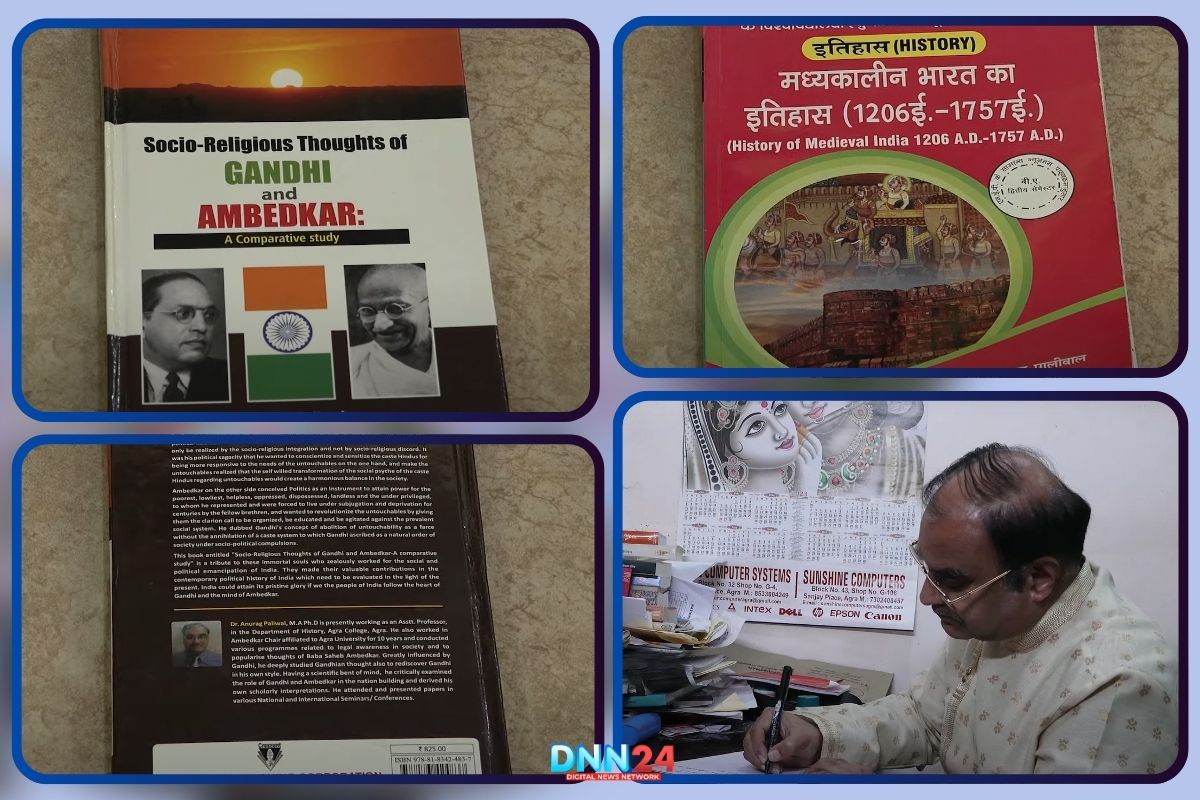The city of Agra, nestled in the heart of Uttar Pradesh, stands as a magnificent testament to India’s rich cultural tapestry. But have you ever wondered how this iconic city got its name? According to Dr. Anurag Paliwal, Associate Professor of History at the prestigious Agra College, the story begins with ancient sages and legendary kings. The name “Agra” is believed to have originated from Sage Angiras, one of the revered Saptarishis of Hindu tradition.
However, another fascinating theory suggests that the city was named after the great King Maharaja Agrasen, leading to its ancient name “Agravan.” The city was also known as “Arya Van,” meaning the forest of Aryans, as it is believed that when the Aryans first entered India, they settled in this very region. Even the famous Greek geographer and historian Ptolemy documented this city, giving it the original name “Agra.” These multiple origin stories reflect the rich, layered history that makes Agra truly special.
Dr. Anurag Paliwal-Two Golden Eras: Sikandar Lodhi and Akbar’s Transformation
Agra’s modern history unfolds in two distinct chapters, each marking a significant transformation. The first chapter begins with Sikandar Lodhi, who established Agra as a prominent city and gave it its initial architectural features. Lodhi introduced Persian influences and Afghan elements, laying the foundation for what would become a great metropolis. However, it was during the reign of Emperor Akbar that Agra truly flourished and gained global recognition.

Dr. Anurag Paliwal explains that Akbar didn’t just develop Agra; he transformed it into a political powerhouse by making it his capital. Under Akbar’s visionary leadership, Agra became not just the heart of India but a city known throughout the world. This transformation established Agra’s position on the global map, creating a legacy that continues to attract millions of visitors today. The Mughal influence brought sophisticated urban planning, magnificent architecture, and a cosmopolitan culture that would define Agra’s character for centuries to come.
Dr. Anurag Paliwal- The Taj Mahal: An Eternal Symbol of Love
When we speak of Agra, the first monument that comes to mind is undoubtedly the Taj Mahal. This magnificent mausoleum, built by Shah Jahan in memory of his beloved wife Mumtaz Mahal, represents the pinnacle of Mughal architecture. Construction began in 1632 and was completed in 1638, employing over 200,000 skilled artisans. The Taj Mahal showcases the use of precious materials, including jade, jasper, agate, carnelian, and lapis lazuli, all intricately inlaid into its white Makrana marble walls.

The chief architect, Ustad Isa Khan, was brought from Iran (then called Persia) to design this masterpiece, as the famous poet Sahir Ludhianvi wrote, “Ek shahenshah ne banwa ke haseen Taj Mahal, hum gareebo ki mohabbat ka udaya hai mazak” (An emperor built the beautiful Taj Mahal, making a mockery of our poor people’s love). Beyond its architectural grandeur, the Taj Mahal stands as a symbol of eternal love, attracting visitors from every corner of the world who come to witness this monument to devotion and craftsmanship.
Ganga-Yamuni Tehzeeb: The Cultural Melting Pot
Agra represents the finest example of Ganga-Yamuni tehzeeb (the Indo-Islamic culture) in India. Dr. Anurag Paliwal proudly states that if this beautiful cultural synthesis began anywhere in Hindustan, it started in Agra. The city has been the birthplace of both Hindi and Urdu languages, making it a unique linguistic heritage centre. This cultural fusion is evident in every aspect of Agra’s life – from its architecture to its cuisine, from its poetry to its daily conversations. The city’s vibrant culture includes famous delicacies like petha, dalmoth, bedai, jalebi, and samosas, each carrying centuries of culinary tradition.

People of Agra are known for their warmth and sweetness, maintaining deep connections with each other even in today’s fast-paced world. The city’s markets still echo with names from the Mughal era – Naai ki Mandi, Loha Mandi, Rui ki Mandi – each representing the specialised bazaar system introduced by the Mughals. This cultural vibrancy makes Agra not just a tourist destination but a living museum of India’s shared heritage.
Famous Personalities: Agra’s Gift to the Nation
Agra has been blessed as the birthplace and nurturing ground of numerous luminaries who have shaped India’s destiny. The city gave birth to legendary poets like Ghalib and Nazeer Akbarabadi, whose verses still resonate in hearts across the subcontinent. It was here that Emperor Akbar introduced Din-i-Ilahi, a unique religion that promoted universal tolerance and understanding. Literary giants like Gopal Das Neeraj, Som Thakur, Dr. Padam Singh Sharma, and Kamlesh were nurtured in Agra’s cultural soil. The great musician Tansen, one of Akbar’s nine gems, also belonged to this blessed land. Politically, Agra has contributed significantly to India’s leadership.

Chaudhary Charan Singh, who became Prime Minister of India, was a student of Agra College. Shankar Dayal Sharma, who served as President of India, studied at Agra University and St. John’s College. Pandit Motilal Nehru and Pandit Hridaynath Kunzru were also students of Agra College. Even the great freedom fighter Bhagat Singh, along with Rajguru and Batukeshwar Dutt, came to Agra College for admission and lived for six months in a building near Noori Darwaza, adding to the city’s revolutionary legacy.
Agra’s Eternal Legacy
Today, as we walk through the streets of Agra, we walk through pages of living history. From its ancient origins linked to sages and kings to its transformation under the Mughals, from its architectural marvels to its cultural synthesis, Agra continues to represent the best of India’s shared heritage. Dr. Anurag Paliwal’s insights reveal that Agra is not just about monuments; it’s about the spirit of unity in diversity, the celebration of multiple cultures, and the preservation of our collective memory.
As we face the challenges of modernisation, Agra stands as a reminder that progress and tradition can beautifully coexist. The city that gave India the concept of specialised markets, nurtured both Hindu and Islamic traditions, produced leaders and poets, artists and freedom fighters, and continues to inspire millions. In every corner of Agra, in every stone of its monuments, in every tradition of its people, we find the essence of what makes India truly incredible – our ability to embrace diversity and create something beautiful together.
Also Read: Timeless Art of Pachchikari: A Family’s 40-Year Beautiful Legacy
You can connect with DNN24 on Facebook, Twitter, and Instagram and subscribe to our YouTube channel.

